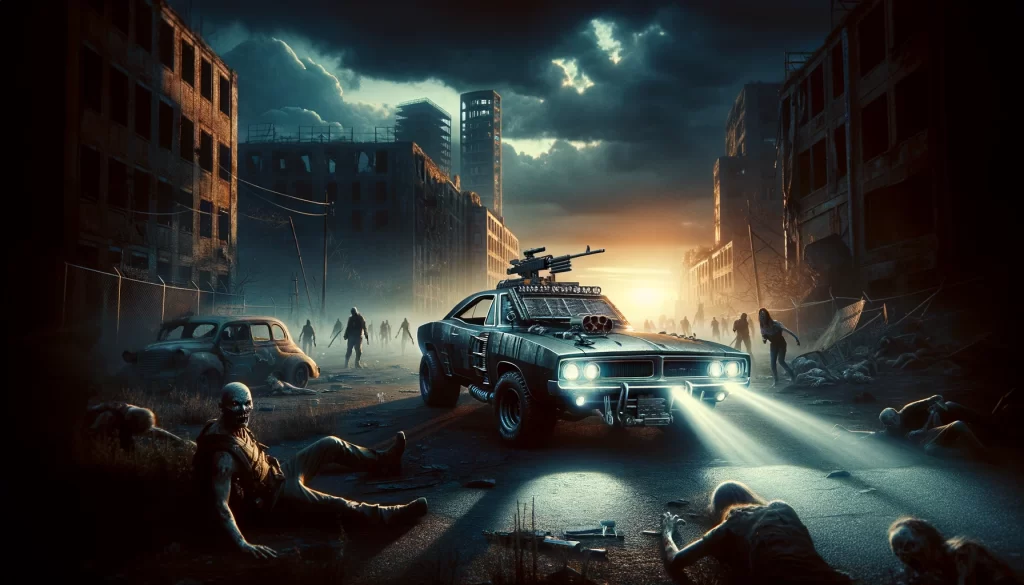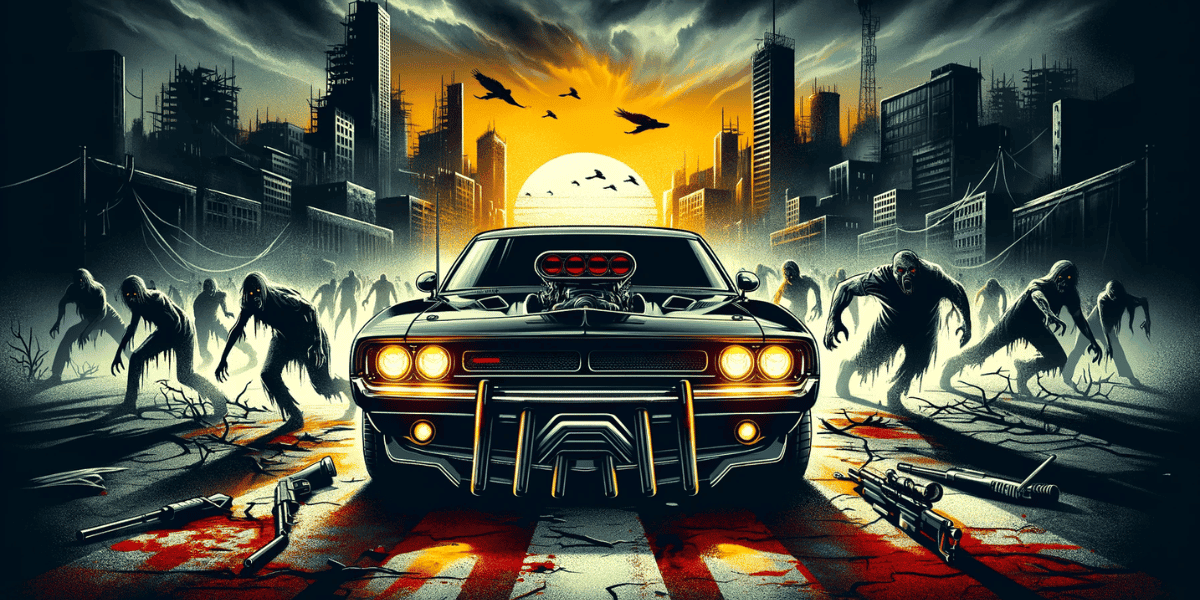In this post, I wanted to share the progress on several key features for my zombie apocalypse action driving game, Diminishing Light: Wheeled Carnage.
Last time, I covered systems like vehicle damage and weapon upgrades. This week, I focused on naming the game, implementing vehicle selection and upgrades, strategic resource gathering, and optimizations.
Task 1: Name and Story

In the headline of this blog post, you’ll see that I have named my new game “Diminishing Light: Wheeled Carnage.” Yes, Marketing Task #1 is now complete!
First, a bit of backstory for some context:
After a catastrophic breach at a high-security lab, a devastating biological weapon has been unleashed, turning the population into ravenous zombies. Civilization is in shambles, with relentless hordes roaming the wastelands, and humanity’s last bastions are isolated communities fighting for survival.
As a skilled driver, your mission is to forge lifelines between these enclaves, establishing vital supply routes under the constant threat of the undead and human marauders. Your vehicle, equipped with an arsenal and custom rigs, is your best ally in this vehicular warfare.
In a world where darkness heralds doom, light is the ultimate sanctuary. Harness it wisely to carve out safe zones and power up your community. Manage resources to fuel your defenses and keep the lights burning bright—your survival depends on it.
Now, onto this week’s development progress…
Task 2: Implement the Vehicle Stats & Selection Screen
I created a basic garage screen that allows players to pick between a classic muscle car or a rugged truck before embarking on a mission. Each vehicle displays stats like speed, handling, and acceleration. I also plan to allow the user to purchase upgrades to improve performance. Right now that feature is still in the works.
Task 3: Use Light sources to establish resource routes
I created a new mechanic where players must secure resource-gathering routes for their settlement. After clearing out hordes of zombies, they can drop flare light sources to create a safe path.
With the route lit, AI-controlled transport will start transporting collected resources back to the player’s base.
Supplies are crucial for keeping your settlement safe from the zombie horde. I’m still finalizing how the route-building mechanics come together, but it should provide some exciting strategic decisions.
Task 4: Convert My Spawner to ECS
My spawner was initially coded using Unity’s traditional object-oriented approach. While easier to understand, OO has limitations in supporting thousands of active zombie AI agents simultaneously.
So, I converted the system to Unity’s advanced Data-Oriented Technology Stack (DOTS) and Entity Component System. This modular architecture can handle more game objects by focusing on data patterns rather than classes and objects.
There’s a steeper learning curve, but the payoff is enormous – ECS paves the way for a huge number of zombie hordes, whereas OO would limit me to just hundreds.
The player experience benefits dramatically from enabling these epic, screen-flooding undead mobs that react intelligently. Despite some initial hurdles, I’m glad I invested the effort into researching ECS.
This was a significant coding challenge that took up most of my week. It’s not functioning yet, but I learned a lot. By modularizing the spawner this way, I can spawn far more zombies than ever before. This sets the foundation for genuinely epic, screen-flooding zombie hordes down the road – can’t wait!
Final Thoughts
Unfortunately, due to family obligations, I couldn’t complete everything on my to-do list. However, I look forward to some development time during the holidays.
Disregard the spelling in Diminishing Light on the featured image of this article. It’s an AI-generated image that has difficulty spelling words correctly with images. I hope to hire an artist to create some capsule and logo art for the game, as I will need it for the Stem store page soon.
Thank you for reading, and please let me know if you have any new ideas for features or gameplay elements. I always welcome comments and feedback.

